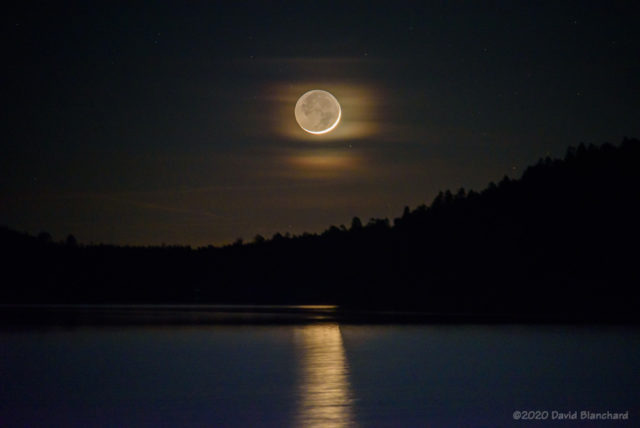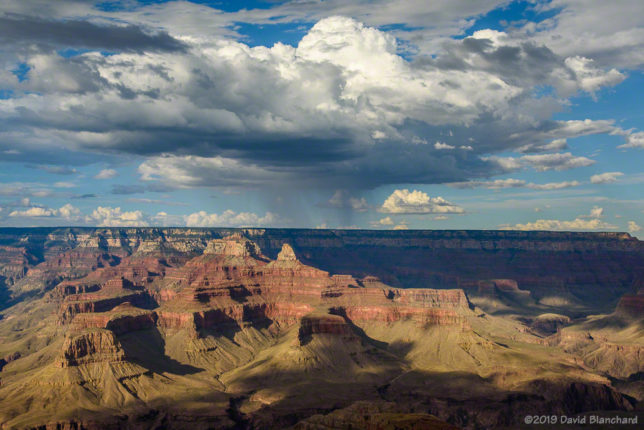Yesterday (12 May 2021) provided an opportunity to view the thin crescent Moon very close to the planet Venus. Also visible in the evening twilight sky was Mercury higher above the pair.
For a few months each year, it is possible to be located so that the setting of the 1-day old crescent Moon aligns along the length of Upper Lake Mary. This allows for a long fetch of water in which to get reflections of the Moon and planets. Of course, this only works if it is not windy and spring is our windy season. So it was very nice to have both clear skies and very light winds for this event.

In the above image the crescent Moon is just slightly above and to the left of Venus. Near the top center of the image is Mercury. Venus is still rising higher in the sky each day while Mercury is dropping lower. Later this month they will pass by each other with ~0.4° of separation. That should be another interesting event to photograph.

Two days earlier there will be a total Lunar eclipse taking place in the pre-dawn hours.



















